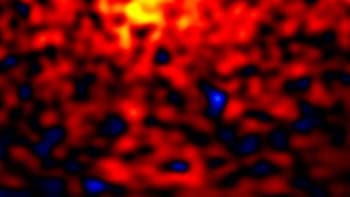
Preliminary observations made by the Dark Energy Spectroscopic Instrument (DESI) hint that the acceleration of the expansion of the universe has not been constant – in other words, dark energy has changed over the history of the universe.
At the turn of the millennium, astronomers discovered that the universe has been expanding at an ever increasing rate. This came as a shock to most cosmologists who had assumed that the pull of gravity was slowing the expansion of the universe after the Big Bang.
In 1998 and 1999, two independent teams discovered the acceleration by measuring the distances to supernovae and the speeds that they are receding from Earth. Dark energy – a term that was coined in 1998 – was invoked to provide the vast amount of energy required for this constant acceleration. Three leaders of those teams shared the 2011 Nobel Prize for Physics for the discovery, and in the past quarter century a variety of observations have backed the inclusion of dark energy in the Standard Model of cosmology.
Now, another shock could be coming thanks to DESI, which was designed to study the expansion of the universe.
Robot-controlled optical fibres
DESI is located on the Nicholas U Mayall Telescope at the Kitt Peak National Observatory in Arizona. In comprises thousands of robot-controlled optical fibres that send light to an array of spectrographs. This allowed DESI to make an extensive map of galaxies and quasars in the universe. The spectroscopic data provide a measure of how fast a galaxy is moving away from us, which is determined by a galaxy’s redshift.
Key to DESI’s dark-energy study is that galaxies are not uniformly distributed throughout the universe, but rather are concentrated in bubble-like regions that are surrounded by emptier space. This is a result of how the early universe expanded and cooled. The process started with a hot plasma through which sound waves propagated, creating areas of high and low density called baryon acoustic oscillations (BAO).
Eventually this plasma “froze” to create the gas that would go on to form the earliest stars and galaxies. Bubbles of galaxies tended to form in the dense regions created by BAO, and these expanded along with the universe. Therefore, the size of a galaxy bubble tells astronomers how old it was when it sent us its light. The team also used the light from ancient quasars to illuminate the BAO, allowing them to probe further back in time than was possible with the galaxy measurements.
Tantalizing hints
Putting the spectroscopic and BAO information together, DESI team could determine the expansion rate of the universe at seven different points in time over the past 11 billion years. While their observations are broadly in line with a constant value of dark energy, DESI scientists have reported tantalizing hints of some deviation.
“So far, we’re seeing basic agreement with our best model of the universe, but we’re also seeing some potentially interesting differences that could indicate that dark energy is evolving with time,” explains DESI’s director Michael Levi, who is based at the Lawrence Berkeley National Laboratory in the US. “Those may or may not go away with more data, so we’re excited to start analysing our three-year dataset soon.”

New theory links supermassive black holes and dark energy
While the team found that its observations are consistent with dark energy varying with time, the statistical significance of the deviation is only about 3σ. This means that there is about a 0.2% chance that the observation is a statistical fluke. In cosmology and some other fields of physics, a significance of 5σ is required for a discovery.
These observations were made in the first year of operation of DESI, which is expected to survey the universe for at least five years.
“It’s astonishing that with only our first year of data, we can already measure the expansion history of our universe at seven different slices of cosmic time, each with a precision of 1 to 3%,” says Berkeley’s Nathalie Palanque-Delabrouille. “The team put in a tremendous amount of work to account for instrumental and theoretical modelling intricacies, which gives us confidence in the robustness of our first results.”
As well as shedding new light on the expansion of the universe, DESI has also provided new information about the mass of the neutrino.
The BAO observations are described in a preprint on arXiv. Related publications can be found here.



